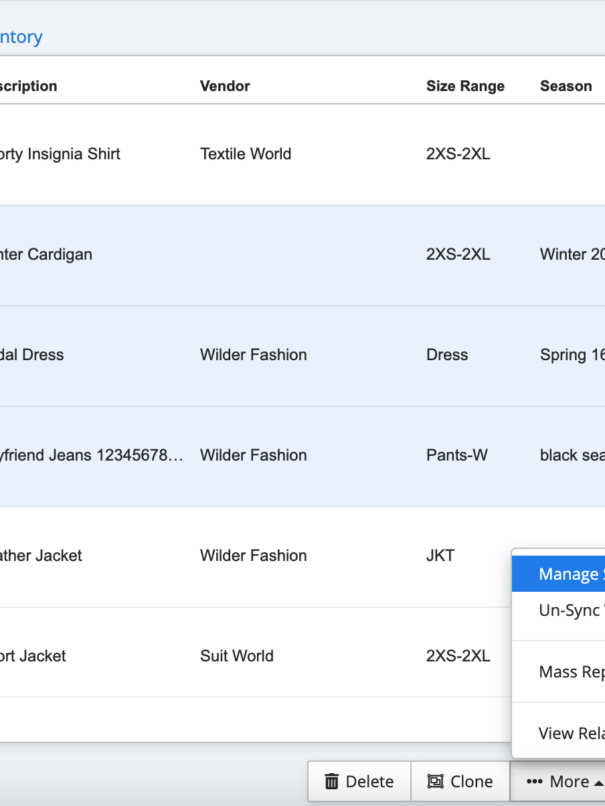Any company that sells physical inventories requires a place to store those inventories, be it a warehouse or a store. Retail inventory management is essential for determining when more of a certain product is required, fulfilling orders in a timely and efficient manner, and preventing loss of items. It has a direct impact on profitability, and no company can grow successfully without an effective inventory management system in place.
There are numerous inventory management techniques available and the best one for you will be determined by the type of your business and the products you sell.
This post is for business owners who need to figure out how to manage their inventory levels effectively. Whether you’re establishing a new inventory management system or looking to improve an existing one, we’re offering some of the most common inventory control methods that you might find useful.
Photo by Petrebels on Unsplash
The Goal of Inventory Management
Successful inventory management is critical to a company’s success. Excess inventory is reduced and you have enough products in stock on hand to fulfill client demand when you manage your company’s inventory well. The following are some of the most important inventory management goals:
Having enough supply. One of the goals of inventory management is to shape demand in accordance with current supply. Supply tracking ensures that goods are available to meet customer demands and ensure high customer satisfaction levels.
Eliminating extra inventory. Inventory management will help with inventory optimization and keep dead stock off the shelves. Goods that don’t sell deplete the company’s resources by occupying space in your warehouse or store. Sales promotions (such as flash sales or bundling of products) can be utilized to push underperforming inventory stock. Another option to get rid of obsolete inventory is to return unsold stock or sell the items at a discount to another company.
Know when to scale or shrink production. If you’re a manufacturer, you know how important it is to scale back output to meet customer demands and cut production, especially at the end of the season. One of the goals of inventory management is to let you know exactly how many items are in your inventory at any given time, so you know when to decrease or increase your output.
Minimizing inventory costs. If you don’t sell the items in your inventory, your assets could easily turn into liabilities, especially if you’re working with perishable products. As a result, ensuring that inventory doesn’t lose capital is one of the smart goals examples for retail inventory management. When you manage stock levels correctly, you avoid buying expenses, carrying costs, and storage costs.
Optimizing sales. As part of your inventory management strategy, you should keep track of and assess company sales on a regular basis. You need to know which products don’t sell and tend to sit for a long period of time, which ones are higher-value items and best-sellers, as well as which items sell well at different seasons of the year. This information will help you keep track of how many goods you need and when you should order them in order to increase sales.
Most Effective Inventory Management Techniques
There are many types of inventory management strategies, so it can be challenging to choose the right one for your company. The more quickly your company expands, the more challenging stock management gets. That is why laying a solid foundation from the beginning is so important. Here are some inventory management best practices and techniques to take into consideration when choosing the best type of inventory management for your business:
- ABC Analysis. This strategy works by determining the most and least popular items. Inventory value, cost significance, and annual consumption units are used in ABC analysis.
- Batch Tracking is a quality control method that allows users to group and monitor comparable commodities in order to track defective inventory items back to their originating batch or manage inventory expiration.
- Bulk Shipment. This technique is based on the idea that buying and shipping items in bulk is nearly always less expensive. Bulk shipment is among the most used inventory management methods and can be used for goods that are in high demand. The disadvantage of bulk shipment is that holding large amounts of inventory can increase warehousing costs.
- Consignment Inventory. This method of inventory management includes a wholesaler that places goods in the retailer’s hands but retains ownership of the stock until it’s sold. Then the retailer is able to purchase the spent stock.
- Dropshipping is a technique that completely removes the expense of inventory storage. You can pass customer orders and shipment information directly to your wholesaler or manufacturer, who will subsequently ship the items.
- Cross-docking is a method similar to dropshipping, where you transfer items immediately from one transport truck to another without any warehousing.
- Demand Forecasting is based on historical sales data. In essence, it’s a way to forecast demand and estimate future sales of inventory, i.e. what products a business expects consumers will buy in the future.
- Economic Order Quantity is a formula that calculates how much stock a company should buy based on a number of parameters such as demand rate, the total cost of production, etc. The economic order quantity (EOQ) formula selects the greatest number of items to minimize holding, buying, and other expenditures.
- The LIFO and FIFO methods are ways of calculating the price of items. In order to keep inventory fresh and maintain cash flow, the FIFO method (first-in, first-out) assumes that older goods are sold first to avoid spoils. LIFO (last-in, first-out), on the other hand, assumes that newer items are sold first, which in turn lowers the taxes.
- Just-in-time inventory management (JIT) is a method of receiving goods only when it is needed, rather than ordering too much and risking being left with dead inventory.
- Lean Manufacturing is a collection of management techniques that may be applied to any type of business. Its purpose is to increase efficiency by removing waste and non-value-adding activities from day-to-day business operations.
- Reorder Point Formula. Many executives and business owners often turn to standard inventory management formulas to keep things running smoothly and stay organized. One such formula is the Reorder Point Formula which determines the minimum inventory quantities that a company should hold before restocking. To account for wait time, a reorder point is frequently higher than a safety stock level. Other examples of inventory management formulas include Cost of Goods Sold Formula, Average Inventory, Sell-Through Rate, etc. Besides inventory management formulas there are also inventory management ratios, such as the Inventory Turnover Ratio.
- Safety Stock refers to ordering additional inventory and putting it aside in case the organization doesn’t have enough to refill. This helps avoid stockouts, which are frequently caused by inaccurate forecasting or unexpected changes in consumer demand.
- Six Sigma is a technique that gives businesses the tools they need to improve their performance (raise profits) and reduce surplus inventory.
- Lean Six Sigma combines Six Sigma with the lean method to optimize stock flow and further reduce surplus inventory.
- Perpetual Inventory Management entails physical counts of inventory as soon as it arrives in order to provide real-time data. It’s the most basic inventory accounting method, and it can be manually recorded in an Excel spreadsheet or on paper.
Photo by Scott Graham on Unsplash
How ERP Can Improve Inventory Management
One of the wisest decisions a business owner can make is to use an ERP (enterprise resource planning) system for cloud inventory management. Not only will you avoid the problems of using a spreadsheet, as well as all the possibilities for human error that come with it, but you’ll also save time on manually updating inventory.
Your company’s inventory will be automatically integrated with all processes and operations, from planning to production and accounting if you use an ERP system. You’ll be able to run your entire business from a single platform, making your company more streamlined, organized, and efficient.
Although no two ERP systems are the same, the inventory management module in a typical ERP solution will have the following functionalities:
- Stock management and tracking
- Stock transfers and storage management
- Multi-channel order fulfillment
- Sales and order management
- Integrations with shipping, accounting, eCommerce, and other tools
- Payment gateway functionality
- Intelligence analytics and reports (including year-end inventory reporting)
ERP inventory management solutions are designed to eliminate manual labor by streamlining and automating the inventory management process and operations. Furthermore, ERP systems enable you to collect higher-quality data, which provides you with insights into your organization that can be used to track performance and plan for growth.
ApparelMagic for Inventory Management
ApparelMagic is an inventory management software that acts as a central hub for your clothing company. It includes multi-location inventory management, warehouse management, multi-channel sales, purchasing and manufacturing, multi-currency accounting, customer service and support, as well as a wide range of powerful integrations to help you make smart inventory decisions and ensure you have complete control over your entire inventory at all times.
This software provides a wide range of benefits, including accurate tracking, inventory count, and real-time data, and helps avoid issues like stock-outs, overstocking, and phantom inventory. It also enables you to get complete visibility of your inventory. With ApparelMagic, you can organize your warehouse and get better information that will help you provide a better customer experience and help keep your customers happy.
ApparelMagic is powered by a combination of ERP with customer relationship management (CRM) and product lifecycle management (PLM) features. With software tailored to clothing and accessories, this solution lets fashion companies manufacture and deliver orders quickly, efficiently, and with minimum waste.
The Bottom Line
The benefits of inventory management can’t be overstated. Proper inventory management is critical if you want to be competitive and provide your consumers with the experience they desire, regardless of whether you are an online business, a brick-and-mortar store, or you’re using multiple sales channels.
If you don’t have a solid approach to inventory management, keep a close eye on your inventory turnover and levels of inventory, or you fail to count goods on a regular basis, you’re setting yourself up for inventory problems and challenges. Poor inventory management can have a long-lasting negative impact on your business.
Using specialized inventory management software is the best option for inventory management and smart inventory investment. Deciding when you might require one is an important stage in your company’s growth, so be sure you pick an inventory management software that masters the fundamentals of inventory management and functions as a catalyst for your expansion, such as ApparelMagic.







